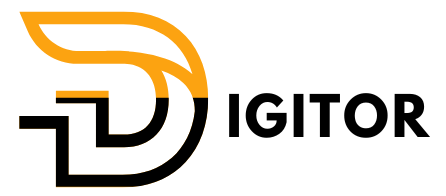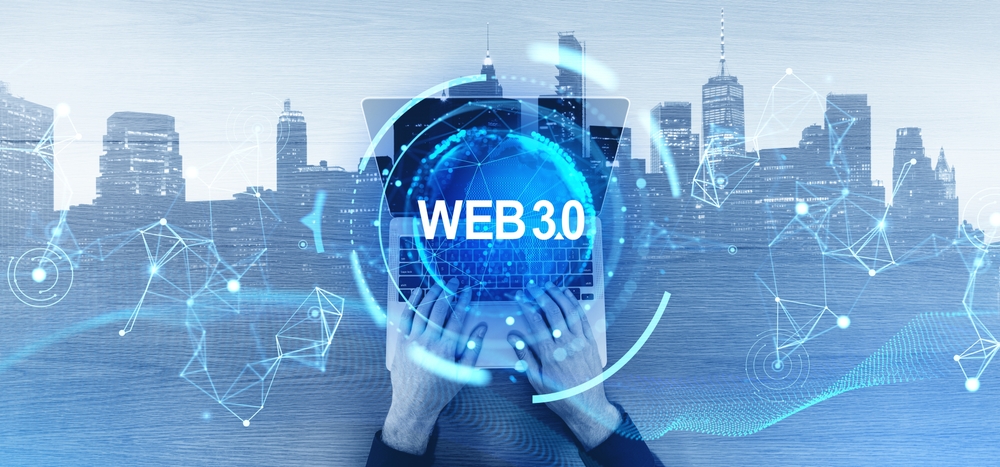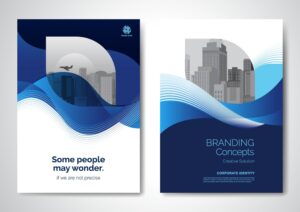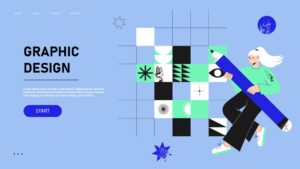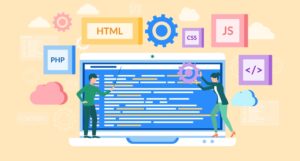AI-Enhanced Web Optimization: Improving Performance and Usability
Introduction: The Role of AI in Web Optimization
In today’s fast-paced digital world, website performance and usability are crucial for keeping users engaged. Slow-loading websites and poor user experiences can lead to high bounce rates and lost opportunities. AI-enhanced web optimization is revolutionizing the way websites function by using artificial intelligence to improve both performance and user interaction. AI technologies, including machine learning algorithms, can automatically analyze user behavior, identify issues, and implement solutions that enhance speed, usability, and overall user satisfaction.
What Is AI-Enhanced Web Optimization?
AI-enhanced web optimization involves using artificial intelligence technologies to optimize various aspects of a website’s performance. By applying AI, developers can automate and refine the optimization processes, ensuring websites load faster, perform more efficiently, and deliver a smoother experience to visitors. This approach goes beyond basic optimization techniques, offering predictive analysis, personalized experiences, and real-time improvements that adapt to user needs.
Key Benefits of AI-Enhanced Web Optimization
1. Faster Load Times
One of the primary factors contributing to poor user experience is slow page load times. AI tools can optimize elements like images, scripts, and overall page structure to ensure faster load times. Machine learning algorithms can also predict and pre-load content based on user behavior, reducing the perceived wait time and making the website feel faster and more responsive.
2. Personalization for Improved Engagement
AI can analyze a user’s behavior on the site, including the pages they visit, how long they stay, and what they interact with. This data is then used to personalize the website content for each individual user. Personalization leads to higher engagement because visitors are shown content that is relevant to their interests, improving the likelihood of conversions. For example, AI can recommend products, blog posts, or other content based on the visitor’s past interactions, resulting in a more engaging and relevant experience.
3. Enhanced User Interface and Navigation
AI algorithms can automatically detect patterns in how users navigate a website, offering insights into where users experience friction or confusion. By analyzing this data, AI can suggest or implement UI improvements that make the site easier to navigate. It can optimize the layout, streamline the flow of information, and enhance overall usability. This ensures that users can find what they’re looking for quickly and easily, improving overall satisfaction and engagement.
4. Predictive Analytics for Proactive Optimization
AI-enhanced optimization tools can use predictive analytics to foresee potential issues before they become problems. For example, if AI detects that certain elements of a webpage are loading slower during peak traffic times, it can automatically adjust resources to manage traffic more efficiently. This proactive approach ensures that websites remain optimized even during high-demand periods, providing a consistent and reliable user experience.
5. Continuous Learning and Improvement
One of the biggest advantages of using AI for web optimization is its ability to learn and evolve over time. As AI algorithms continue to analyze user behavior and website performance, they can continuously improve the optimization strategies. This means that the website is always adapting to new trends, technologies, and user expectations, ensuring long-term success.
How AI Enhances Specific Areas of Web Optimization
1. Image Optimization
AI tools can automatically compress and optimize images without sacrificing quality, ensuring faster page load times. Machine learning algorithms can analyze image content and apply the most effective compression techniques based on the image type and user device. This reduces the file size, allowing pages to load more quickly without impacting visual appeal.
2. Content Delivery Networks (CDNs)
AI-powered CDNs can optimize content delivery by analyzing user locations and predicting where content is most likely to be requested. AI can adjust the delivery of images, videos, and other assets based on these insights, improving load times and reducing server strain.
3. A/B Testing and Conversion Rate Optimization
AI-enhanced A/B testing tools can automatically test and optimize various elements of a webpage, such as headlines, calls to action, and images, to determine which combinations work best for specific user segments. Over time, AI can analyze which variations lead to better conversions and automatically apply those changes to improve the overall website performance.
4. SEO Optimization
AI can analyze search engine algorithms and optimize content to improve a site’s ranking on search engines. Machine learning algorithms can analyze search data to identify relevant keywords, optimize metadata, and suggest changes to improve on-page SEO. By continuously refining the content based on AI-driven insights, websites can maintain better visibility in search results and attract more organic traffic.

Best Tools for AI-Enhanced Web Optimization
1. Google PageSpeed Insights
Google PageSpeed Insights uses AI to analyze and provide recommendations for improving the speed and performance of a website. It evaluates both mobile and desktop versions of a site and offers insights on how to reduce load times and enhance user experience.
2. Cloudflare
Cloudflare’s AI-driven CDN helps optimize website performance by improving load times, ensuring faster delivery of content, and protecting against traffic spikes. It uses machine learning to predict user demand and adjust server resources accordingly, providing a seamless experience even during high traffic.
3. Adobe Sensei
Adobe Sensei uses AI to help optimize digital experiences across multiple platforms. It can automate tasks like content optimization, personalization, and image management, allowing developers to improve the user experience while saving time on manual tasks.
Best Practices for Implementing AI-Enhanced Web Optimization
1. Prioritize User Experience
While optimizing for speed and performance is important, it should always be done with the user experience in mind. Avoid making drastic changes that could confuse users or disrupt their experience. Ensure that AI-enhanced optimization works to enhance usability rather than detract from it.
2. Regularly Monitor and Test
AI algorithms should be monitored and tested regularly to ensure they’re delivering the desired results. Over time, the needs of the website and users may change, so it’s important to keep optimizing based on new insights and performance data.
3. Implement AI Gradually
Introducing AI into a website’s optimization strategy should be a gradual process. Start by implementing AI tools in one area, such as image optimization or A/B testing, and monitor the results before moving on to more complex implementations.
Conclusion: Embracing AI for Optimal Web Performance
AI-enhanced web optimization is transforming the way websites are designed and maintained. By utilizing machine learning, predictive analytics, and personalization techniques, businesses can create faster, more engaging websites that keep users coming back. With the continuous learning capabilities of AI, websites can evolve alongside changing user expectations and technological advancements, ensuring long-term success. By embracing AI-powered tools and strategies, developers and businesses can stay ahead of the competition and deliver exceptional online experiences.
Ready to optimize your website with AI? Contact us to learn how we can help you harness the power of AI for better web performance and user satisfaction.
External Resources
Explore more related articles to deepen your understanding and make informed choices about graphic design techniques
WordPress Website Developer: Expert Solutions for Your Online Presence
Custom WordPress Development: Tailored Websites for Your Business
